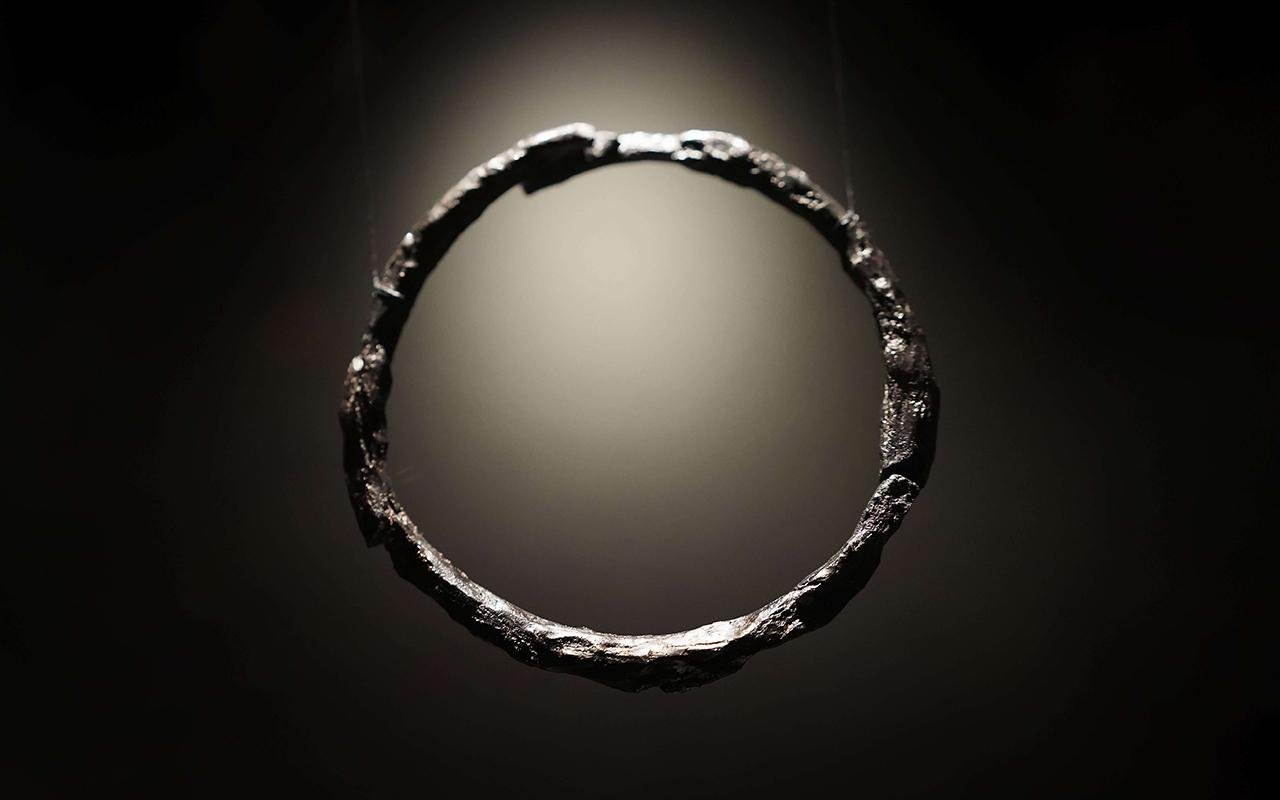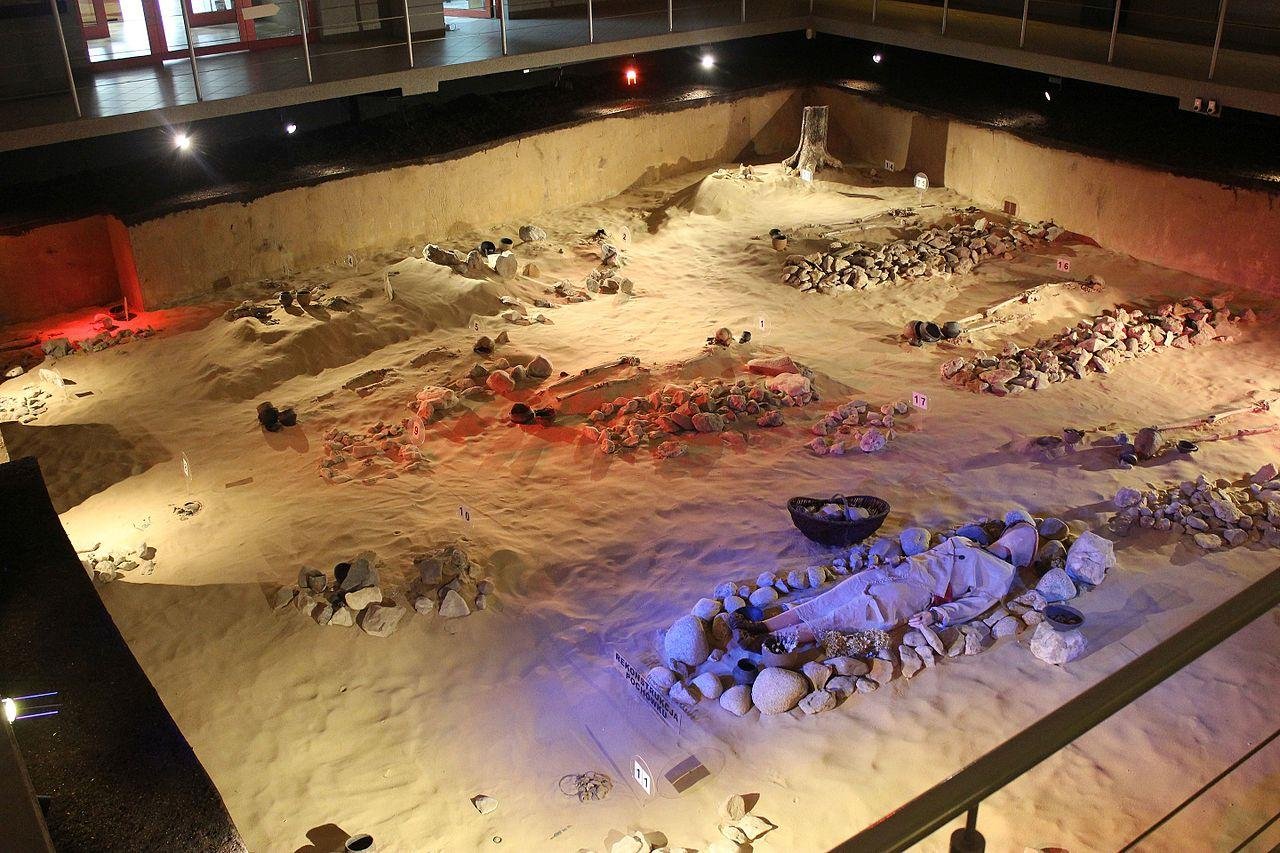Researchers have made a remarkable find in Poland’s Częstochowa Museum collection—several ancient ornaments made from meteoritic iron. A team of Polish and French scientists analyzed burial objects from two early Iron Age graveyards, Częstochowa-Raków and Częstochowa-Mirów. Their work has given us new insights into how early metalworkers used cosmic materials in their craft.
 Cosmic materials were found in two bracelets. Credit: Częstochowa City Hall/Częstochowa Museum
Cosmic materials were found in two bracelets. Credit: Częstochowa City Hall/Częstochowa Museum
The findings, published in the Journal of Archaeological Science: Reports, confirmed that three bracelets, an ankle ring, and a pin contain meteoritic iron. This makes them one of the biggest known groups of such artifacts at an archaeological site. These cemeteries, which date back to about 750–600 BCE, are linked to the Lusatian culture. This culture lived in areas that are now Poland, the Czech Republic, Slovakia, eastern Germany, and western Ukraine.
For a long time, archaeologists knew about just two meteoritic iron bracelets in the Częstochowa Museum’s collection. Jerzy Zimny, an archaeologist, first looked into these in the 1960s. But in 2022, Professor Albert Jambon a meteorite specialist from Sorbonne University and Dr. Karol Dzięgielewski from Jagiellonian University revisited these artifacts. This new study led them to find three more ornaments made from meteoritic iron.
The scientists used portable X-ray fluorescence spectrometry (p-XRF) and scanning electron microscopy with energy-dispersive spectroscopy (SEM/EDS) to study 26 artifacts. These cutting-edge techniques showed high levels of nickel—characteristic of ataxites, a rare type of iron meteorite. The results suggest that all five meteoritic iron objects came from one meteorite, likely a contemporary fall rather than an imported material.
 Cemetery of the Lusatian culture, Częstochowa Museum. Credit: Andrzej Otrębski
Cemetery of the Lusatian culture, Częstochowa Museum. Credit: Andrzej Otrębski
In the Bronze Age, people valued meteoritic iron because it was so scarce. But its use in these Iron Age burial grounds suggests a shift in perception. Earlier societies viewed meteoritic iron as a material with great symbolic or ritual significance. But the Lusatian culture, however, seems to have just seen it as an accessible raw material. The presence of both meteoritic and smelted iron within the same burial contexts, whether cremation or inhumation, tells us that meteoritic iron wasn’t just for certain social groups or religious purposes.
Dr. Dzięgielewski said that Poland has no evidence of local iron smelting during this period. This means the terrestrial iron in these objects was likely imported. But the meteoritic iron was almost certainly local. This supports the idea that ancient craftsmen might have collected and worked with this iron not long after it fell to Earth.
One fascinating part of the find is the way the meteoritic iron was incorporated into jewelry. The presence of varying compositions within individual artifacts hints that metalworkers mixed meteoritic iron with smelted iron to achieve specific aesthetic or structural effects. This technique came about almost a millennium before we knew about wootz and Damascus steel, raising new questions about early metallurgical innovations.
This finding broadens our knowledge of ancient ironworking methods. Researchers aim to explore other sites in Poland to determine whether similar meteoritic iron objects exist elsewhere.
More information: Jambon, A., Bielińska, G., Kosiński, M., Wieczorek-Szmal, M., Miśta-Jakubowska, E., Tarasiuk, J., & Dzięgielewski, K. (2025). Heavenly metal for the commoners: Meteoritic irons from the Early Iron Age cemeteries in Częstochowa (Poland). Journal of Archaeological Science, Reports, 62(104982), 104982. doi:10.1016/j.jasrep.2025.104982





